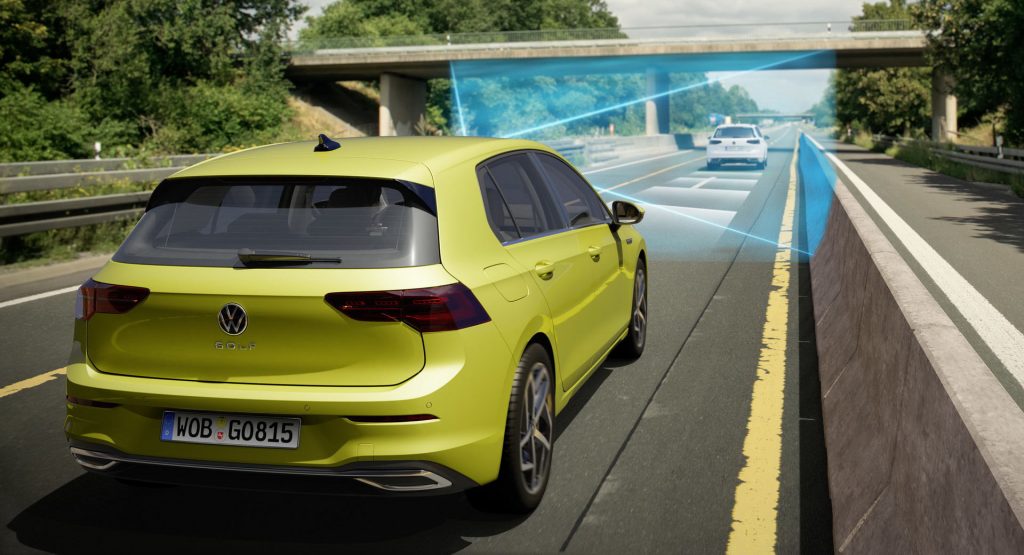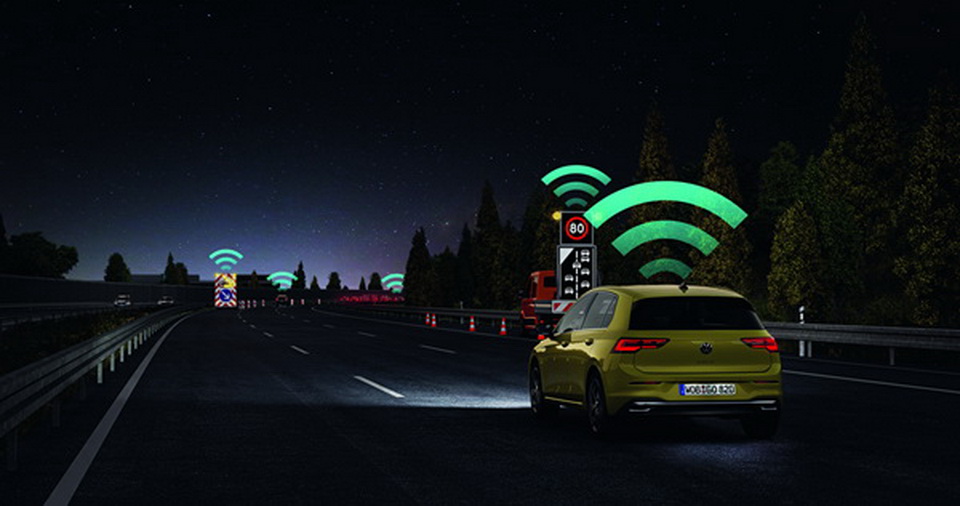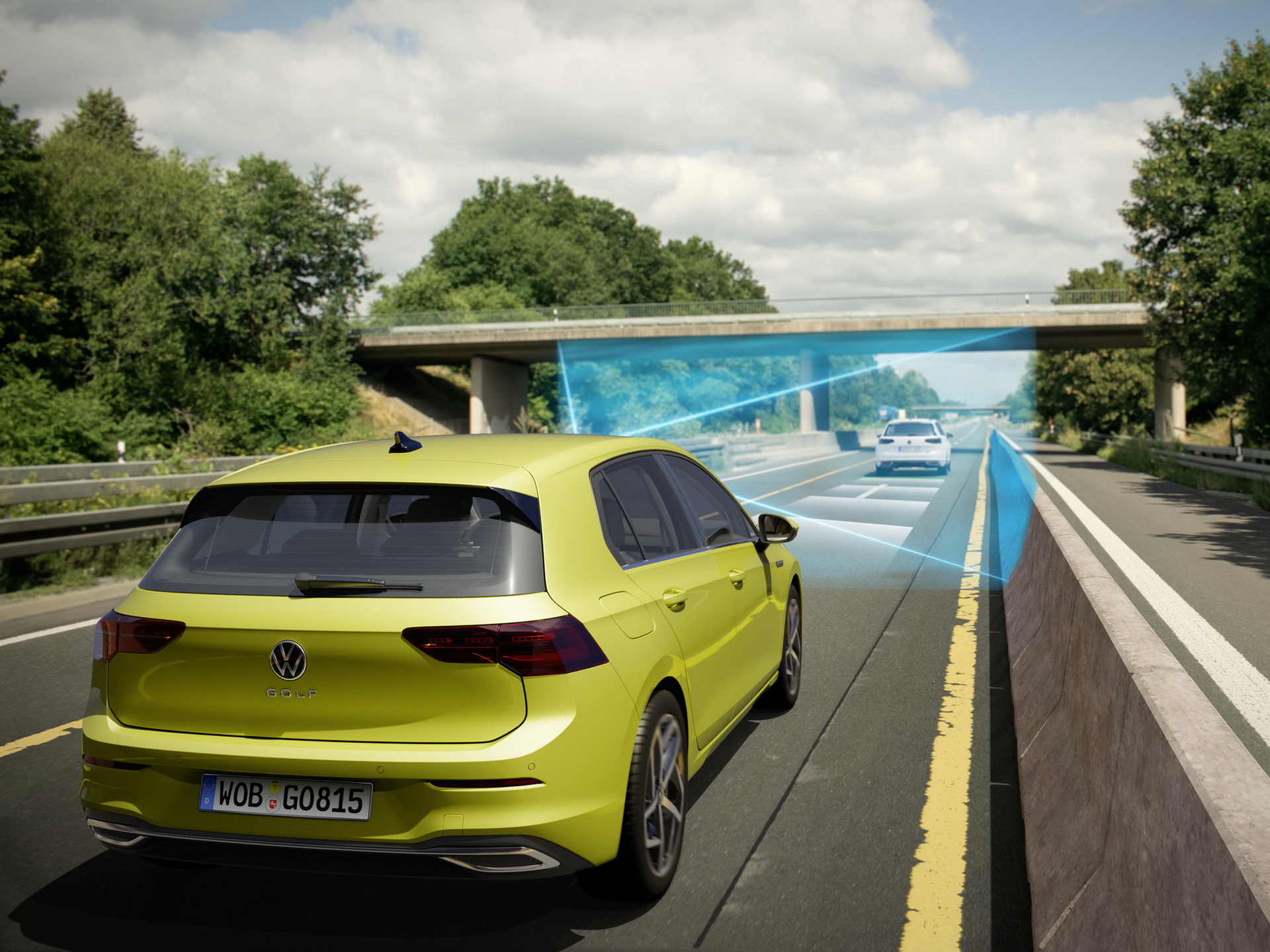Volkswagen’s car-to-x communication system, more specifically the ‘Local Hazard Warning’ is the first piece of tech to be rewarded by Euro NCAP in nearly six years.
The system is fitted as standard to the all-new Golf, and will also find its way into future ID models, allowing cars to communicate not only with each other, but also with properly equipped road infrastructure and various emergency vehicles.
Thanks to this ITS-G5 technology, cars like the Golf 8 can transmit a signal to other vehicles if they have broken down, or have stopped in a manner that poses a safety risk. In time, drivers might even receive advance warning of motorcycles and tractors.
Read Also: We Compare The 2020 VW Golf Mk8 To The Outgoing Golf Mk7
“This is an exciting area of safety and one which offers the potential to help road users who have, so far, been difficult to protect, like motorcyclists,” said Euro NCAP secretary general, Michiel van Ratingen.
“It is already on Euro NCAP’s roadmap but its full potential will not be realized until many vehicles are equipped with a compatible system, along with roadside hazards. Volkswagen are to be congratulated for making the technology standard on high-selling vehicles like the Golf.”
Aside from transmitting warnings, cars equipped with this Local Hazard Warning system can also receive signals and use them to alert the driver if there’s any danger. Warnings that can be issued include: Safety System active in vehicle ahead (Emergency Electronic Brake Light, Automatic Emergency Brake or reversible occupant restraint system intervention), Stationary Vehicle alert, Broken-Down Vehicle, Accident, End of Traffic Jam, Roadworks, Stationary Emergency Vehicle, Dynamic Emergency Vehicle.
If the situation is not deemed critical, signals to the driver start off as simple information. However, if the distance decreases and the situation becomes critical, the information is replaced by a warning in most cases – critical events will generate a warning even without any prior information.
There are however small limitations to consider. For example, warnings are only issued when the speed of your car exceeds 80 km/h (50 mph); which is where most serious accidents happen – on rural roads and motorways.
We should note that this system is not switched on upon vehicle delivery, in accordance with the GDPR, meaning that the customer has to activate it by accepting the data protection agreement. If you do that, then the system will remain ‘ON’ by default, although it can still be disengaged if the driver so chooses.









